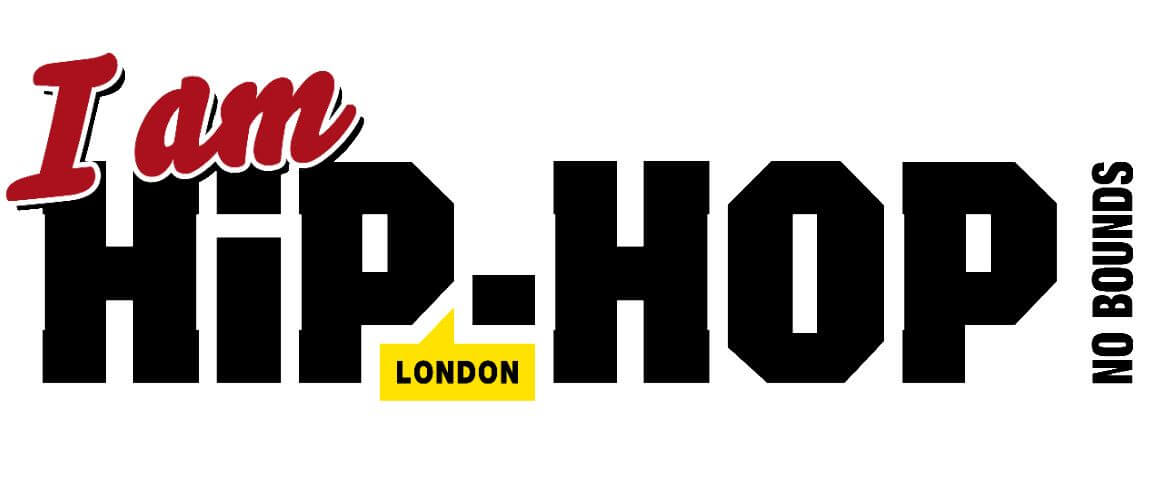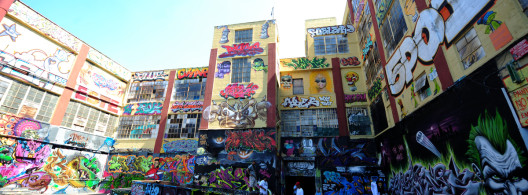Since the dawn of time, undoubtedly, people have imprinted their names on the walls of caves, on rocks, anywhere that presented them with a chance to leave a distinctive mark. In modern society, all these years later, this is referred to as ‘tagging’ and is often viewed as an act of destruction and vandalism, something thoroughly disapproved by the establishment. When some think about graffiti they picture a ‘gang’ member marking out their turf, however, 5 Pointz showed us that there was and always will be much more to the art than aggressively sprayed messages.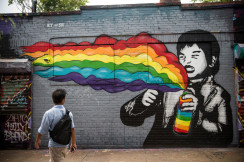
In November of 2013, the all-embracing aerosol art on 5 Pointz (New York City) was replaced with nothing but white paint. Once celebrated as the ultimate refuge for urban artists, The Long Island City structure was demolished to make way for extravagant apartments.
Once considered a modern day “graffiti Mecca,” 5 Pointz attracted aerosol artists from across the globe, all arriving with one goal; to express themselves on the walls of a factory building, all 200,000-square-foot of it. The name itself was significant as it highlighted the desire to unite the five boroughs as one, however, because of its status as graffiti’s “Holy Grail,” the complex ended up uniting aerosol artists on an international scale.
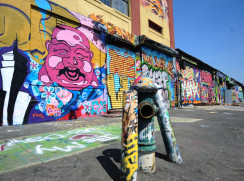 From Belgium to Brazil, Tracy 168 to Cope2, renowned writers have painted on the building walls. Additionally, since the early 00’s, 5 Pointz attracted numerous hip-hop heavyweights who came and paid their respects, including Doug E. Fresh and Mobb Deep, to name just two. The inspirational depictions were as diverse as they were striking, from Asian concubines to Picasso inspired backdrops, perhaps an absorbing piece of art that seems to pay homage to Guillermo del Toro “Pan’s Labyrinth” is the most fascinatingly beautiful.
From Belgium to Brazil, Tracy 168 to Cope2, renowned writers have painted on the building walls. Additionally, since the early 00’s, 5 Pointz attracted numerous hip-hop heavyweights who came and paid their respects, including Doug E. Fresh and Mobb Deep, to name just two. The inspirational depictions were as diverse as they were striking, from Asian concubines to Picasso inspired backdrops, perhaps an absorbing piece of art that seems to pay homage to Guillermo del Toro “Pan’s Labyrinth” is the most fascinatingly beautiful.
Initially named The Phun Factory, 5 Pointz was the brainchild of a New York assemblage known as the Graffiti Terminators. The goal was simple; to offer graffiti artists an opportunity to display their work in one unanimously capable vicinity, one that provided them with a space to operate and express themselves artistically without worrying about the ‘long arm’ of the law. Interestingly enough; in the early 00’s, The Phun Phactory’s came under scrutiny because the New York City Police argued that their artistic displays encouraged adolescent graffiti on a heightened level.
As the site evolved and grew in importance, Jonathan Cohen, a graffiti expert, quickly became its illustrious curator. A man often referred to as “Meres One,” his signature name tag, Cohen’s assumed the identity after entering the world of graffiti at the tender age of 13. Rather idealistically, the Flushing native’s inspiration came after witnessing an aerosol-based painted Smurf on a wall, an event that made him run home and start examining the entire culture of graffiti.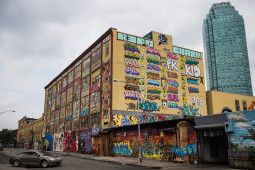
Even at this young age, Cohen was entirely captivated; he knew this was his calling. Fast forward five years, and after rigorous scouting and preparation, The Deadly4Mula (TD4) crew was assembled. The 90s was a hectic decade for Meres, initially graduating from the Fashion Institute of Technology, all before evolving his trade from tagging and throw-ups to intricate piecing. Not content with this expansion, the legendary figure then produced countless aerosol art murals throughout New York City and other cities on the East Coast.
Up until a year ago, Meres and other enthusiasts ran 5 Pointz with competence and panache. If an artist possessed a burning desire to paint a mural on the building, then they requested a permit from the man himself. In addition to the application, a vocation sample and a blueprint of the potential mural were also required if approval was sought. The more proficient artists were given the more outstanding locations; prime spots were reserved for theoretical work that displayed immensely inventive aspects.
D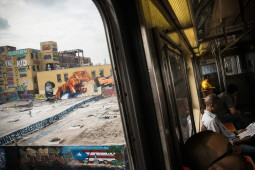 emolition of a cultural and historical landmark in order to erect some anti-cultural and insignificant high-rise luxury condos was indeed a sad day for the world of art. A physical shrine that celebrated the beauty of hip-hop culture, at five stories high, 5 Pointz offered a genial, off the wall, visual feast, an alluring sight that fashioned a welcome distraction from the glumness across the street, the MoMA PS 1 site.
emolition of a cultural and historical landmark in order to erect some anti-cultural and insignificant high-rise luxury condos was indeed a sad day for the world of art. A physical shrine that celebrated the beauty of hip-hop culture, at five stories high, 5 Pointz offered a genial, off the wall, visual feast, an alluring sight that fashioned a welcome distraction from the glumness across the street, the MoMA PS 1 site.
Up until the white wash of this depictive nirvana, witnessing the interior courtyard of 5 Pointz was like plummeting into a vicariously feverish reverie. What started out as a somewhat impermanent project quickly turned into a fantasy boasting some of the finest artistic displays on the planet. It is for this very reason that the whitewashing of 5 Pointz’s walls was met with such raucous consternation. Faces crumpled, heads dropped, people wept.
To replace something so attractive with a $400,000,000 monstrosity certainly wasn’t unlawful, nevertheless, it still seems truly unethical.
Written By John Glynn
John Glynn
Latest posts by John Glynn (see all)
- Rap vs Hip Hop: What is the difference? — June 26, 2015
- Graffiti History: 5 Pointz — January 20, 2015
